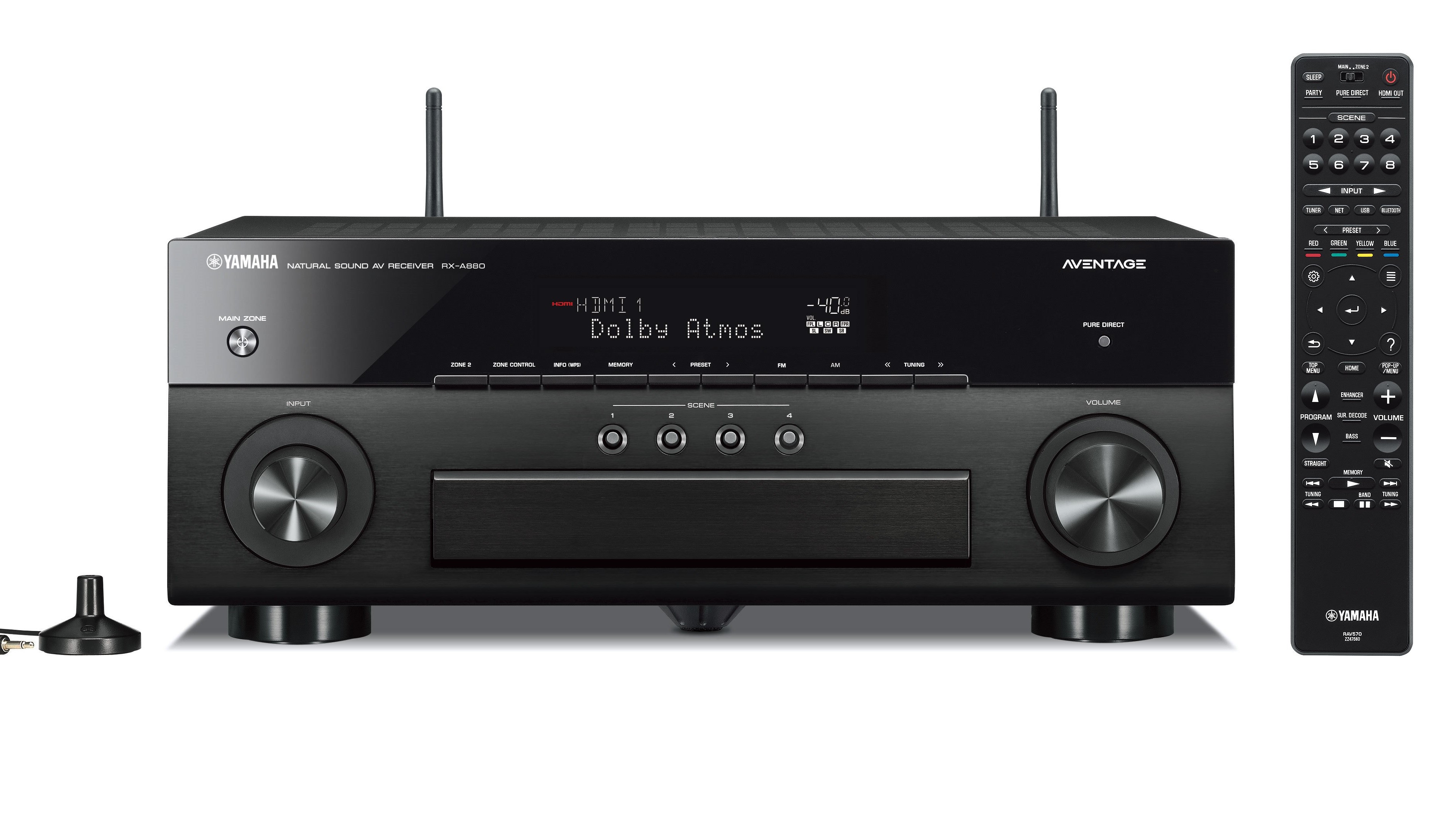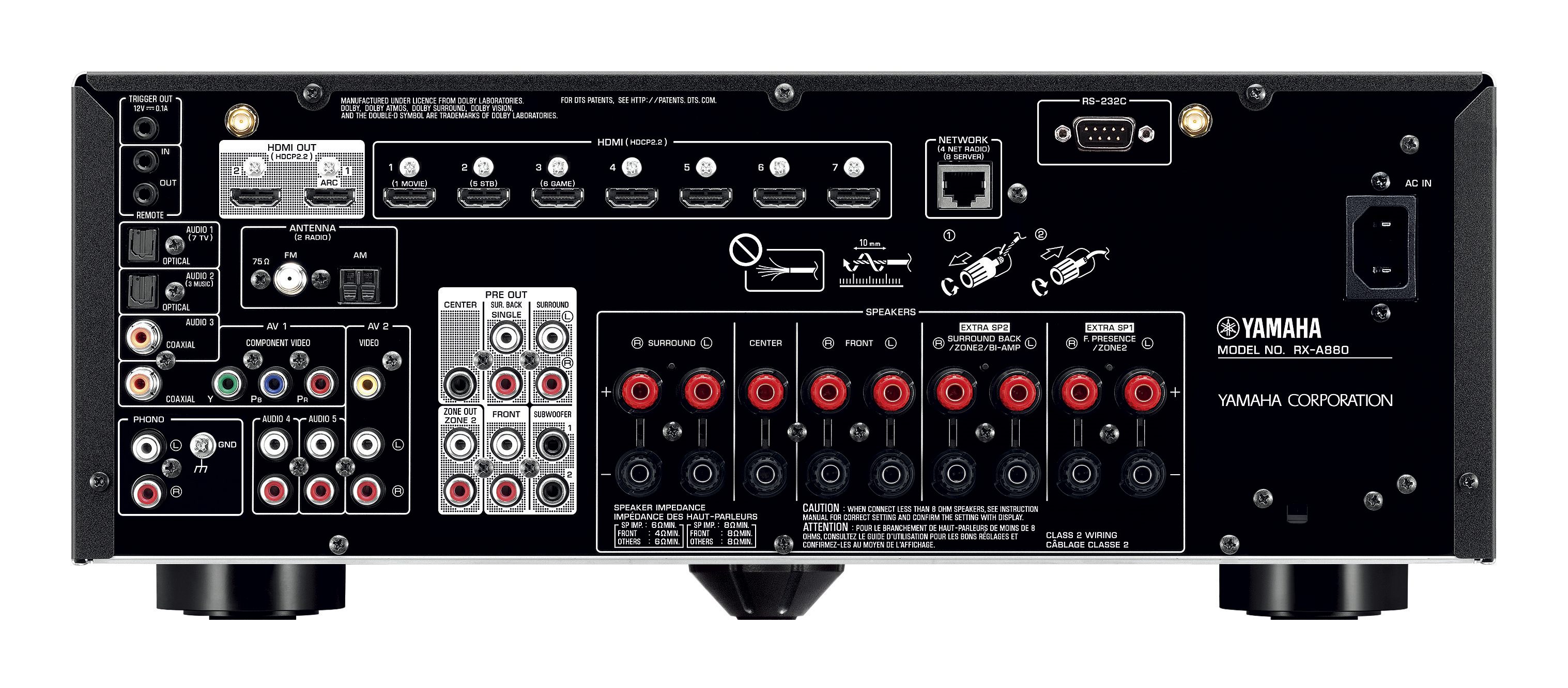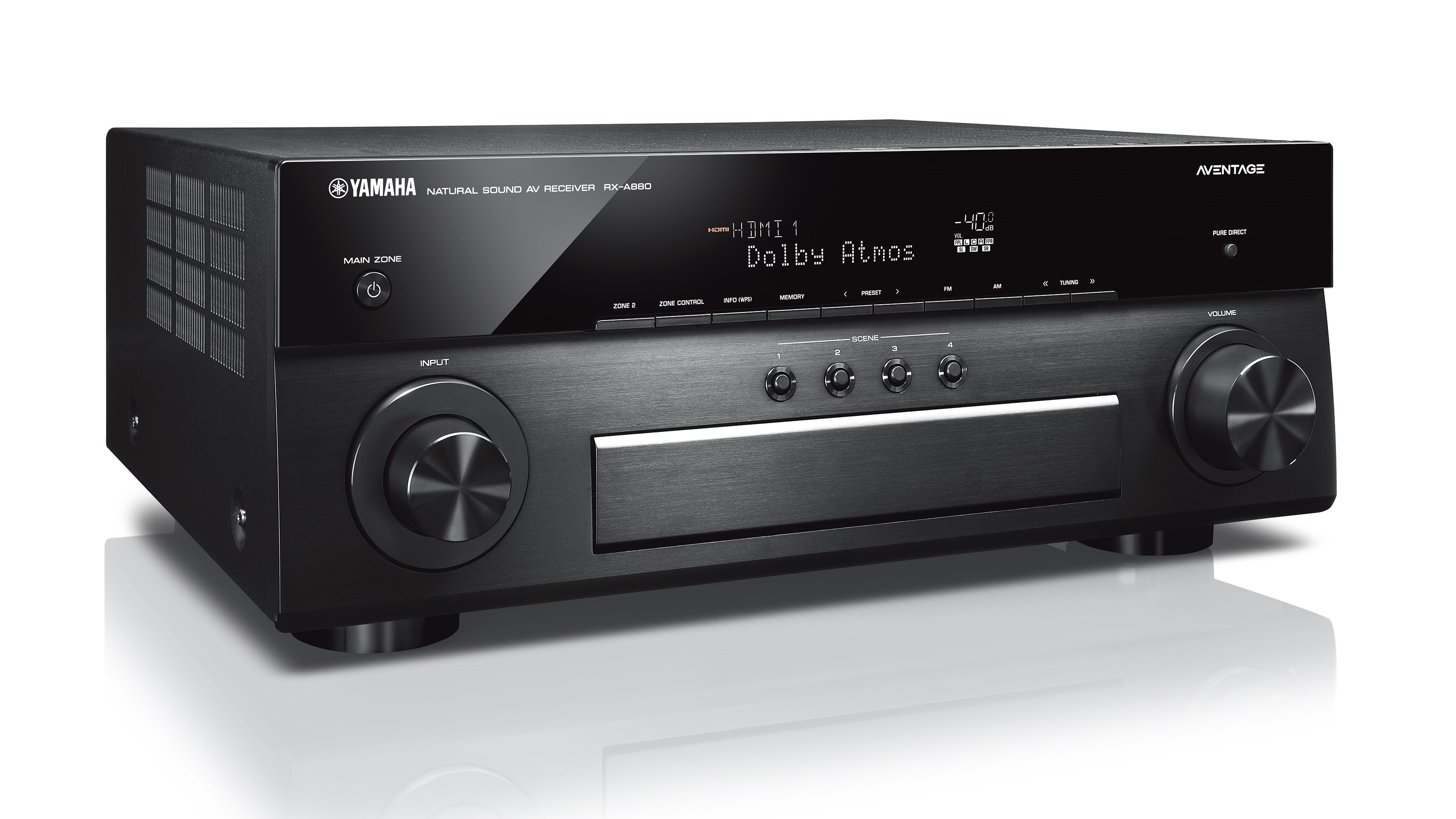TechRadar Verdict
The Yamaha RX-A880 isn’t perfect, but with great wireless support and tons of connectivity options, it’s the receiver to get under $1,000/£1,000.
Pros
- +
Tons of connectivity
- +
Great sound
- +
Dolby Atmos support
- +
Wireless features
Cons
- -
Dated interface
Why you can trust TechRadar
AV receivers may be getting less common with the rise of the soundbars and improved built in speakers - but, if you’re an audiophile, you know that it’s still impossible to beat a good receiver and good set of speakers for home audio.
Receivers are getting better and better, too. Gone are the days when they only really connected to your speakers and nothing else - these days, not only can they traffic audio from any source to any speakers, but they can also connect to wireless audio systems, work with your smart home and more all while boasting a top-tier sound-quality thanks to standards like Dolby Atmos.
One of the latest of these high-quality receivers is the new Yamaha RX-A880, which comes at $899 (£899, AU$1,799) and boasts Yamaha’s MusicCast, 7.2-channel Dolby Atmos support, seven HDMI inputs, and more.

Design and setup
Overall, the Yamaha RX-A880 isn't a bad-looking receiver ... but it’s also not all that unique. The fact is that the vast majority of AV receivers these days look like basic black boxes on your TV stand, and this one is no exception to that rule. That doesn’t mean it’s ugly. In fact, in the contrary it looks perfectly fine.
The receiver comes in at 17.2-inches wide, 15-inches deep, and 6.7-inches tall. On the front, you’ll find a pretty standard setup: an input knob on the left, volume knob on the right, and a row of buttons at the top to select between features like the AM and FM radio, change presets, and so on. There’s also a hatch on the bottom that opens up to reveal a headphone jack, USB port, aux port, and a few other features.
We like that those ports and features are a little hidden as it makes for a sleeker look at the front when you may not be using those features much anyway.
Perhaps more important than the front, however, is what you’ll find on the back. As mentioned, the RX-A880 boasts a whopping seven input HDMI ports, meaning that no matter how many sources you have, you should be able to connect them. All of the HDMI ports support HDCP 2.2 as well - which solves one of the biggest issues with the receiver’s predecessor, the Yamaha RX-A860, and there are also a few other analog input ports, so even older sources should work.
Sign up for breaking news, reviews, opinion, top tech deals, and more.
When it comes to outputs, you’ll find two HDMI-outs, and enough speaker outputs for a 7.2-channel surround setup plus a pair of speaker outputs for a second zone.
That’s a lot of connectivity.

The remote is pretty high-tech, too. While it may be a little complicated for those that haven’t used a receiver before, you will get used to it ... even if you only regularly use a few of the controls.
On the top, you’ll get a switch to select between the main speakers or the second zone, along with power controls. Under that, you’ll get scene selectors, allowing you to quickly switch between preset scenes. Then, there are input controls, a directional pad and menu buttons, volume and program controls and playback controls. We found that the remote was well-built and buttons felt nice and clicky, which is always helpful.
Like Yamaha’s other new receivers, this one is compatible with the Yamaha MusicCast system, which can be set up through the MusicCast app. We found that it was pretty easy to set the receiver up within the MusicCast app by following the on-screen instructions and, after setting it up, you’ll be able to do things like control settings, stream music to the receiver from your phone, and more.

Performance
Of course, the best thing about the receiver is how good it sounds, helped along by some high-tech features like Yamaha’s YPAO room calibration system.
Without getting too technical, YPAO basically ensures that EQ is tuned to your room - so if bass frequencies tend to resonate more in your room, for example, it’ll cut them back a bit to compensate. It’s a smart system, and one that we found was worth setting up.
The receiver is capable of outputting audio at 110W per channel at 8Ω which is plenty of volume for those that want a powerful and loud overall sound. Even in larger rooms, this receiver should have no trouble filling the room with powerful audio, as long as you have a decent set of speakers too.
Plus, don't forget the RX-A880 supports Dolby Atmos. If you have enough speakers to set up the full system, you’ll find that you’re intensely immersed in whatever you’re watching thanks to the Dolby features. But, even when we had just a 5.1-channel setup, we felt like we never needed to go to a cinema again.
Frequency response was full and detailed with plenty of clarity to make even avid audiophiles happy - though if you’re buying a receiver this expensive, your speakers will probably have a bigger impact on frequency response than anything else.

Using the Yamaha RX-A880 isn’t overly difficult, but it’s not the easiest thing to do either. Once everything is properly set up, the reality is that you probably won’t need to access all the features and settings. That’s to say, while the remote might be intimidating for some, simply get used to the controls that you do need to use, and you should be just fine.
Using the MusicCast app is thankfully pretty easy too. From the app, you can do things like turn the receiver on and off, and connect your preferred music streaming service. There are a few streaming services unfortunately missing from the ones you can connect, including Google Play Music and Apple Music.
That said, however, you may not need to connect your streaming service if you don’t want to. That’s because the receiver includes built-in support for things like Apple’s AirPlay and Bluetooth - so you can simply stream music from your preferred app on your phone. We would have liked to see AirPlay 2 support ... but that's always something Yamaha can add further in the future.
Perhaps the biggest downside to using the receiver is the on-screen user interface: The interface simply looks old and tired, and the fact that it looks pixelated doesn’t help. We found that it was fine to navigate most of the time, but those looking to do a deep dive into the settings may find that it’s not quite as simple as it should be.
Verdict
The Yamaha RX-A880 is an excellent choice for anyone looking for a powerful, affordable receiver. Not only does it sound great, but it boasts a ton of ports, support for a range of wireless standards, and works with MusicCast, too.
If you’re looking for a receiver that boasts Dolby Atmos support and can be calibrated to your room, and have the money to spend, then the Yamaha RX-A880 is the way to go. If, however, you’d prefer to save some cash but still want support for 7.1 channels, then we recommend the Onkyo TX-NR676.
- Don't miss our guide to the best AV receivers in 2018
Christian is a writer who's covered technology for many years, for sites including Tom's Guide, Android Central, iMore, CNN, Business Insider and BGR, as well as TechRadar.
